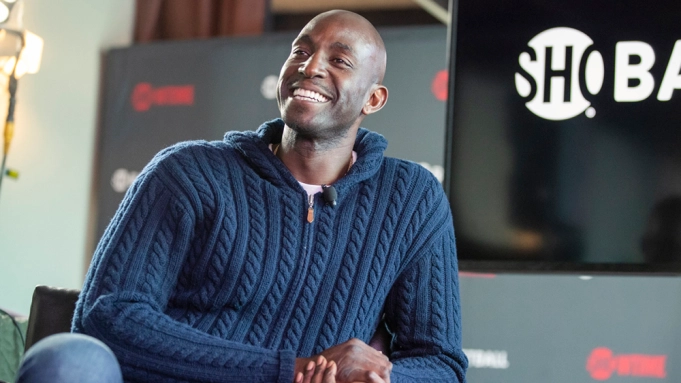BOSTON – The Boston Celtics’ acquisition of superstar forward-center Kevin Garnett began on the night of the 2007 NBA Draft (June 28) when the Celtics did two things to make a future move for Garnett possible.
Although Ray Allen and Garnett would later be at odds over Allen’s post championship departure to Miami, that late June 2007 night, the Celtics acquired Hall of Fame sharp-shooter Allen in a multi-player deal with the then-Seattle SuperSonics, shipping a package of point guard Delonte West, small forward Wally Szczerbiak and forward Jeff Green to the the Sonics in exchange for Allen and center Glen “Big Baby” Davis.

The two steps taken by then-Celtics head of basketball operations Danny Ainge?
- Obtaining another scoring threat in Allen to form a “Big 3” needed to win.
- Moving Szczerbiak, a former teammate of Garnett’s he was none too fond of in previous exposure.
The “Anything Is Possible” journey to the 2008 NBA title took a giant step that night.
Garnett’s story is currently being told via a Showtime sports documentary entitled, (You Guessed It): ANYTHING IS POSSIBLE.
The story is good. KG’s personality shining through is great. The language is filthy.
Co-directed and produced by Eric Newman and Dan Levin, along with producers Mike Marangu, Marc Levin and Brian Bennett—KG’s partner at his production company, Content Cartel—the documentary is a look at KG’s past, delving heavily into Garnett’s youth, his progression as a high school player and astonishing talents displayed at Chicago’s Farragut Academy.
The story winds its way to the fact Garnett became the fifth overall pick of the 1995 draft with team GM Kevin McHale and the Minnesota Timberwolves taking the gamble on the 6-11 high school phenom. Until then, only a sporadic few (Moses Malone, Bill Willoughby, Darryl Dawkins and a small handful of others) had made it to the NBA (or ABA) via high school, not college.
The documentary explains the successful start of Garnett’s NBA career in Minnesota seemingly opened the floodgates for other high school talents to jump right to the NBA, namely Kobe Bryant, Jermaine O’Neal, LeBron James, Rashard Lewis, Tyson Chandler, Amare Stoudimire, Dwight Howard, and Tracy McGrady.
As you would expect with anything and everything Garnett does, the story is true, it’s raw and it is produced by circle of people Garnett allowed into his tight inner sanctum, a place he guards 24/7.
Another take-away for seasoned NBA observers is the undeniable similarities between Garnett and NBA/Celtics’ All-Time great Bill Russell, both very guarded and well-aware of the circle of madness that is fame and the NBA. Both very conscious to keep their privacy – private and families secure.

The documentary is currently running/streaming on Showtime after its November 12th release date. Interviews of the likes of Doc Rivers, KG’s championship coach with the 2008 Celtics, and former teammate Sam Cassell, examine the complexity of Garnett – a player with serious work ethic, intensity on and off court, humor, loyalty to those he trusts, keen observation of the fast-moving world surrounding him and a disdain for anything and anyone who disrupts his normal routine.
Said Eric Newman to Variety: I don’t think the younger generation realizes the overall impact he had, which we obviously do our best to convey in the film. It’s going from high school to the NBA when no one had done it for 20 plus years and the circumstances in which he did it. It’s the pre-salary cap NBA when he got that contract which changed the financial structure of the sport. It’s transforming this physical, intense power forward position where he adds this dynamic skill set on both ends of the floor. And then of course it’s forming the Big Three with the Celtics. We tried to weave these four pillars in without being too in your face about it, but find another — forget basketball, find another athlete who had this kind of impact on their sport. There’s not many.
